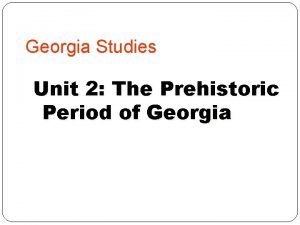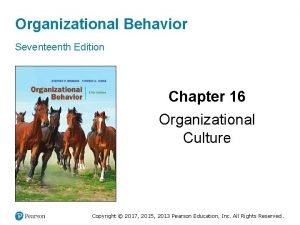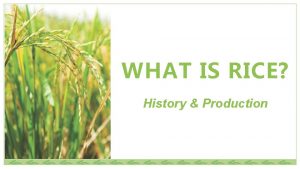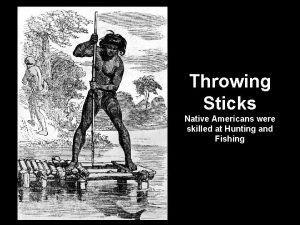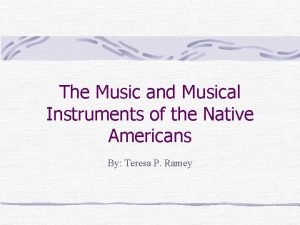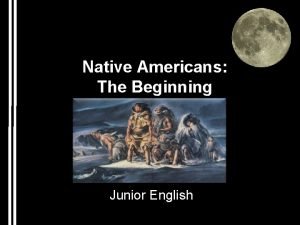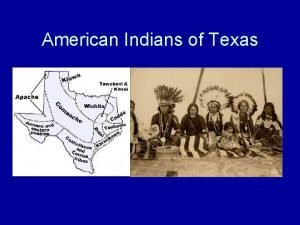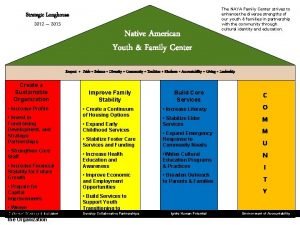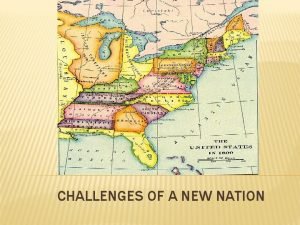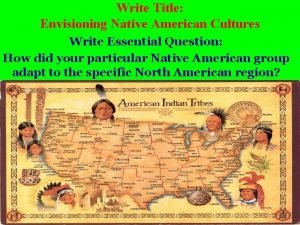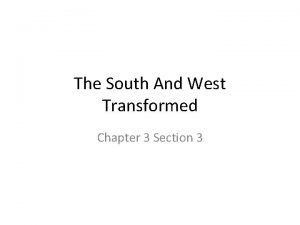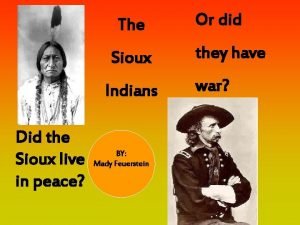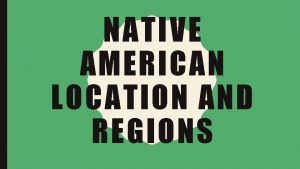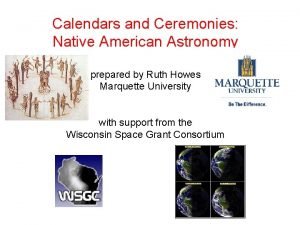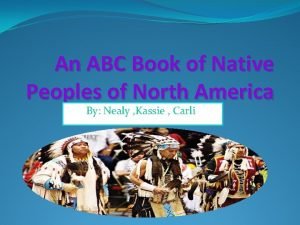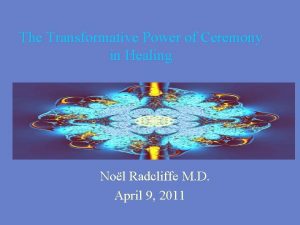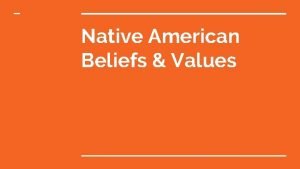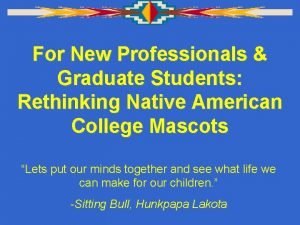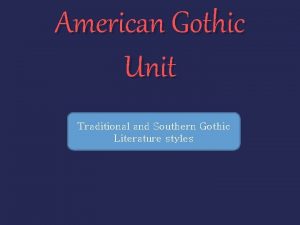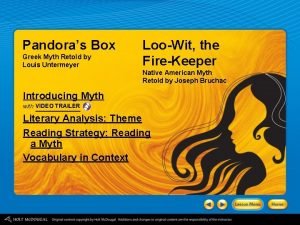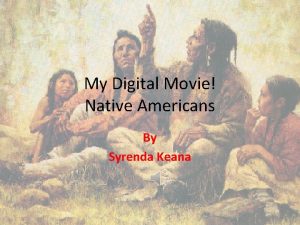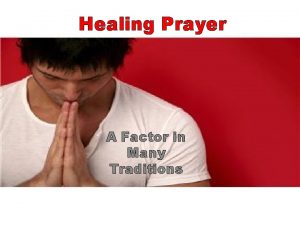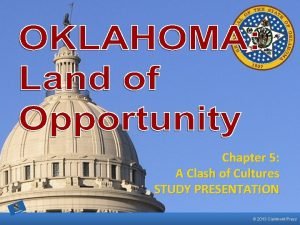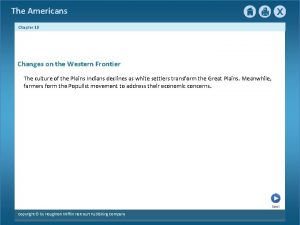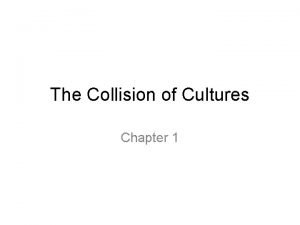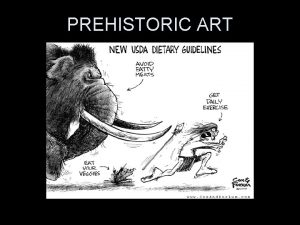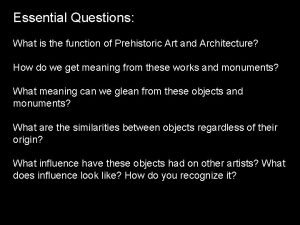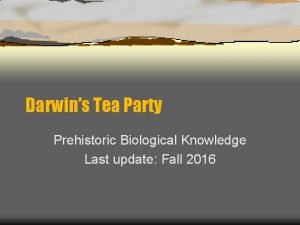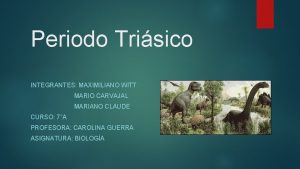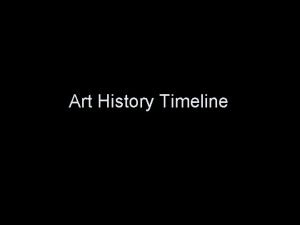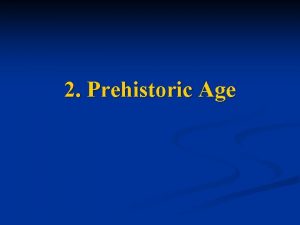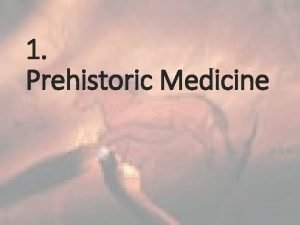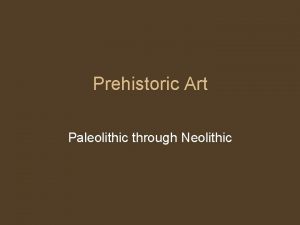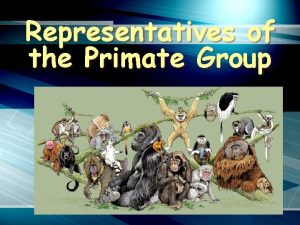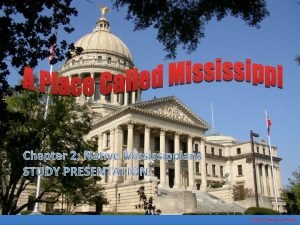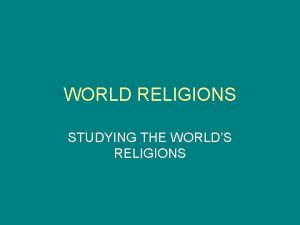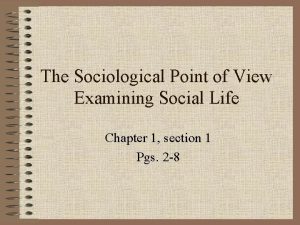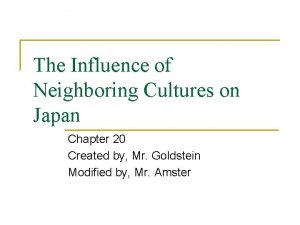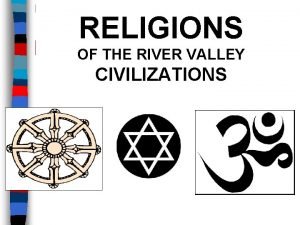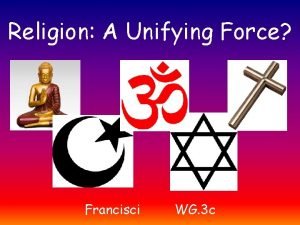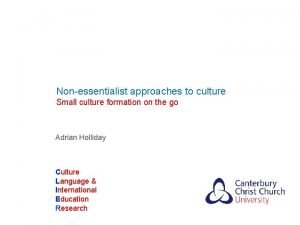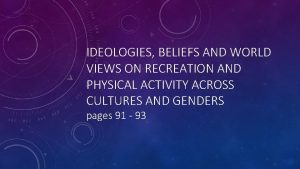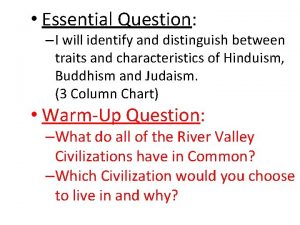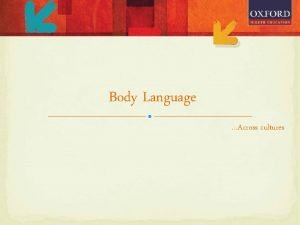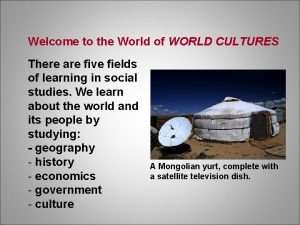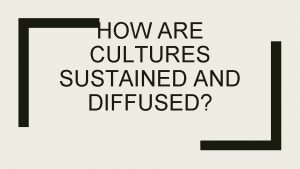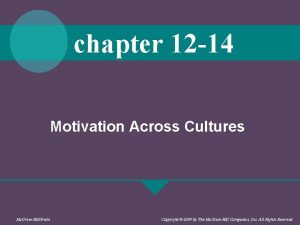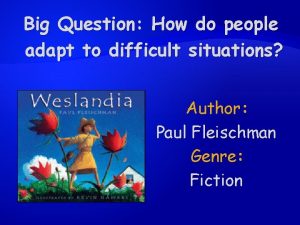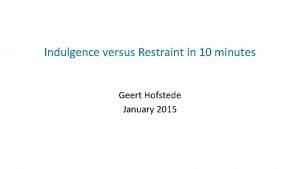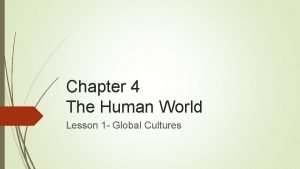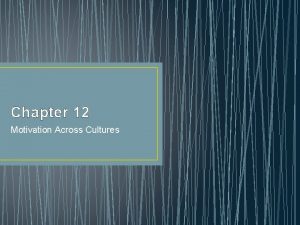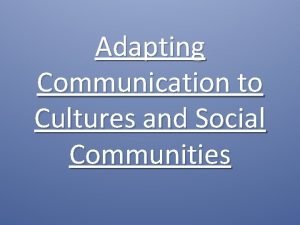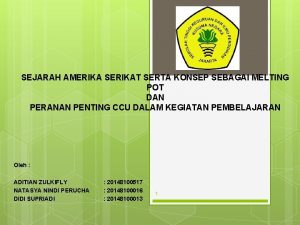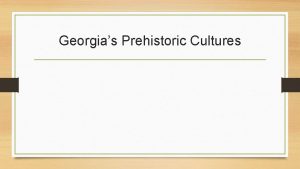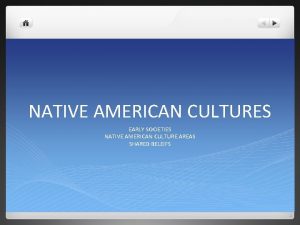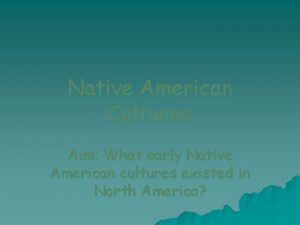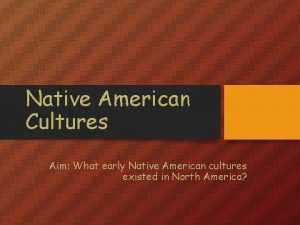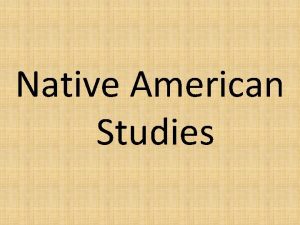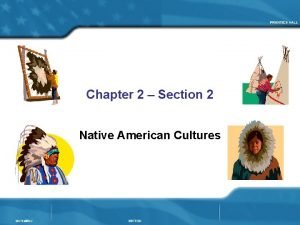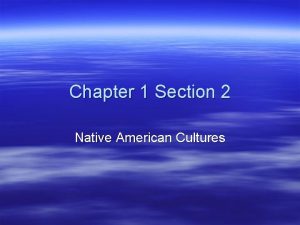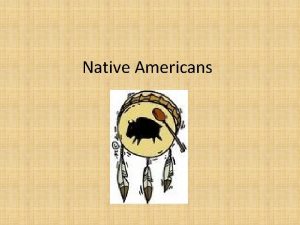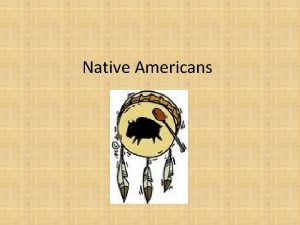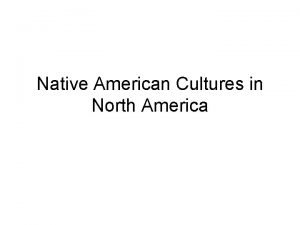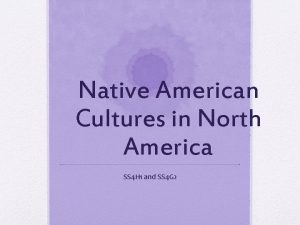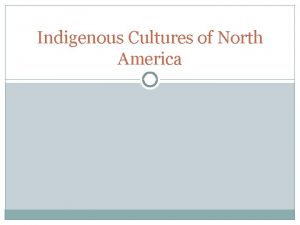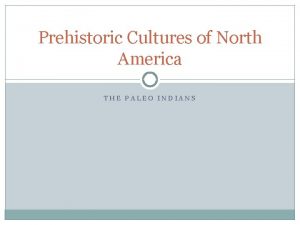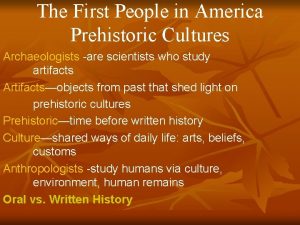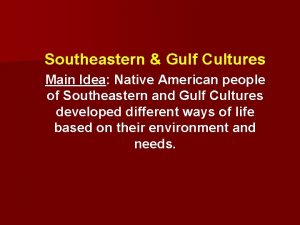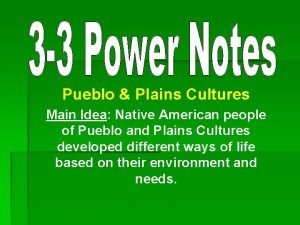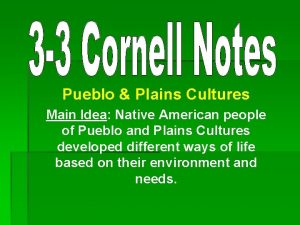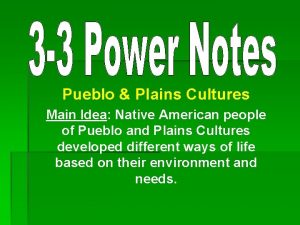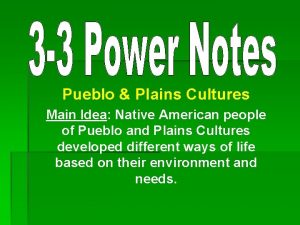Chapter 1 Native American Cultures Prehistoric America Main


























































































- Slides: 90

Chapter 1 Native American Cultures/ Prehistoric America

Main Idea: Groups of early humans migrated to America 1. To migrate means to movement to a new homeland for a large group of people.

I. A. Arrival of the First Americans Who were the first Americans? Between 70, 000 to 10, 000 years ago groups of early humans came to North America. At this time the earth was going through a period called an Ice Age. These early people were the ancestors of the American Indians.

B. Where did they come from? Most experts believe that small groups crossed a land bridge that connected Asia and N. America. Some also believe they crossed from Europe.

C. Where was the land bridge located? 1. Another name: 2. When did the land bridge connect Asia and North America? At the Bering Strait Beringia During the last Ice Age between 100, 000 to 10, 000 years ago, the land bridge appeared.

3. An Ice Age is 4. A glacier is a long period of Earth’s history when global climates cooled allowing huge glaciers to extend covering huge areas. a huge mass of moving ice. Continental glaciers are the size of countries.

5. Scientists believe there have been at least 4 ice ages 6. During the last ice age, did these glaciers extend down to what is today Illinois? Yes

7. How did the land Bridge appear? During the last ice age the level of the oceans dropped exposing the land.

8. How did it disappear? As the temperatures rose, the glaciers melted and the ocean levels rose.

D. Crossing Beringia 1. Why did early humans migrate across the land bridge? They did not know where they were going. The #1 believed reason: they followed herds of animals which were their food.

2. What animals did they hunt? mammoths, saber toothed tigers, elk 3. How did they hunt large animals like mammoths? Groups of hunters worked together to stalk, the herds, charge, and hurl spears

4. Why might early humans have made tools in different shapes? Tools were made to fit different tasks such as chopping, points for spears, and scraping.

5. What was the main building material for these tools? Stone It was easily available, strong, and easy to shape.

E. How did they cross? Some scientists believe there was a corridor of land through the glaciers. It may have been along the coast or at the top of the Rockies.

F. Another group of scientists believe glaciers may have connected Europe & N. America. Groups could have crossed in boats staying at the edge of the glaciers.

G. The descendants of these groups of early people eventually spread out to populate all of N. & S. America.

1. What caused them to continue to spread out throughout the regions? looking for better hunting grounds looking for better climate looking for better terrain to farm Conflict with others

2. Gradually many groups who were mostly hunters and gatherers learned how to: grow (farm) crops 3. What happened to allow this to develop? Many of the large animals like mammoths were becoming scarce.

The climate was changing so some animals could not adapt and died out. Some animals may have been overhunted.

4. How did farming change the lives of these people? -People who farmed no longer had to move constantly in search of food. -They built permanent villages. -More food allowed population to rise.

II. Evidence A. What scientists specialize in the study of the evidence left behind by early people? Archaeologist

B. Examples of evidence: 1. Artifacts These are tools, weapons, carvings, & other things made by earlier people. Clovis Points found in N. America

2. Geological evidence -Great Lakes formed by glaciers. - Long Island & Cape Cod were formed by debris pushed in front of the huge glaciers. -Areas of land flattened to form plains.

3. Fossils are the remains of once living things imprinted in rock. C. The scientist who specializes in the study of fossils is a Paleontologist

D. What is carbon-dating? a method for estimating an artifact’s age; It measures the amount of radioactive carbon

III. Culture A. Culture is the entire way of life that a group of people have developed.

B. When studying a group’s culture one examines their culture traits. KNOW 5 1. 2. 3. 4. 5. 6. 7. 8. customs language beliefs (religion) values (right & wrong) building practices clothing practices government major ways of making a living. 9. art

Languages • Top Languages spoken in U. S. English Spanish French German Italian Chinese Russian Arabic Native Amer.

Religions • Largest religious groups within U. S. 2004 Christianity-76. 5% of population Nonreligious-13. 2% Judaism-1. 3% Islam-0. 5% Buddhism-0. 4% Hinduism-0. 4% • Largest Christian (2002): Protestant-52% Catholic (24%)Mormon(2%)Orthodox 1%

What does Freedom of Religion mean? Freedom of religion means we have the right to worship, or if we choose not to worship, as we please as long as we don’t break laws and abuse the rights of others while we do it.

Types of Governments • Monarchy: • Oligarchy: • Republic: Rule by inherited leaders like kings and queens Rule by a few; dictatorships Military leaders Representative Democracy citizens elect other citizens to govern.

Economic Systems Communism: Govt. controls means of production such as factories, schools, hospitals, stores, utilities like electricity, communications, etc. ; people have very little private ownership Socialism: Govt. controls key means of production such as utilities, hospitals; more private ownership by people. Capitalism: Mostly private ownership with govt. overseeing practices

Customs Inuit first born practices Rights of manhood contests – Native Amer. Meaning of colors-White for weddings Jewelry- wooden plates stretch ears and lower lip

foods

Building Practices


IV. Mesoamerican Civilizations A. 4 major Indian civilizations from earliest to latest: Olmec, Maya, Aztec, Inca

B. Locations 1. Olmec: Mexico, Guatemala, & Honduras (Central Amer) 2. Maya: Mexico, Guatemala, Honduras, & Belize

3. Aztec: 4. Inca: Mexico Western highland of South America from Colombia, Argentina, to Chile. Center was Peru.

C. Accomplishments 1. Olmec Lived between 15003000 BC They built stone pavements and drainage systems & sculpted huge monuments.

a. Why do you think early civilizations developed along large bodies of water? source of food, transportation, water for crops, drinking 2. Maya: They built several large cities each with at least one stone pyramid.

The largest Mayan city was Tikal and had 5 pyramids. They developed a system of writing called hieroglyphics. a. A theocracy is a society ruled by religious leaders.

such as: 3. The Aztecs: They were successful farmers and traders transporting good maize, vegetables, jade, turquoise jewelry and cacao beans. The greatest Aztec city was its capital named Tenochtitlan.

a. Describe the city: It was built on an b. The Aztecs created an empire: island. It was built in the center of a lake and swamp. Causeways were built above the swamp. 100, 000 people lived there. They conquered their neighbors forcing them to obey Aztec govt.

The conquered neighbors were forced to work for them & pay taxes.

4. Inca: This was the largest of the empires. The capital was Cuzco. The Inca empire stretched more than 3, 000 miles and had a population of 9 million. To connect this empire they built 10, 000 miles of roads.

a. What were quipus? This was a system of record keeping using rope and knots. b. What did the Inca develop to be able to farm on slopes of mountains and hills? terraces

C. Machu Pi cchu: Large Incan city high in the Andes Mountains

d. They developed a Language for their entire empire called> Quechua

V. Early American Culture Groups A. The Mound Builders 1. Where did they live? They lived in a region from Wisconsin to Florida & from the Appalachians to the Miss. River valley.

2. Did the mound Builders live in Illinois? Yes Dickson Mounds Museum Lewistown, IL. Cahokia Mounds State Park Collinsville, IL.

3. 2 types of mounds Dome Platform Some took the shape of animals. p 18 -19 4. Purposes: Burial & Ceremonies of the village

5. Great Cahokia Mounds 100 ft. high larger base than Great Pyramid located Collinsville, IL. Largest mound so far discovered Monks Mound -16 acres (14 ½ football fields) in size.

The Native Americans built a city of 30, 000 people by the mound.

C. The Cliff Dwellers & Desert Farmers 1. Groups: Hohokams Anasazis Hopi Navajo Pueblo 2. Where? Southwest U. S. 3. How did they farm in a desert? Irrigation ditches

4. Pueblos were built by the tribes of the desert plains. Pueblos are large, multistoried houses for many people.

5. Building material: rock and adobe. 6. Adobe is 7. Life in a Pueblo sun dried mud brick Village hundreds may live in a pueblo building

They are like indep. apartments sitting on top of each other. Usually no hallways or inner doors connect each “apartment. ” They may share? A fireplace

9. Where was the center of community Life in the pueblo? on the roofs 10. What was the major way of making a living for the desert Plains and cliff dwellers? farming with irrigation

Cliff Dwelling Cities of Southwest

11. The cliff dwellings up to 1000 people lived in some. No stairways or connecting hallways Toe holds & ladders were used. Often the women had to climb to the fields

12. Famous cliff dwelling historic site: Mesa Verde 13. Location: Colorado 14. Why did these tribes build their villages on the sides and tops of cliffs? Protection from harsh climate

Reason why many cliff dwelling villages were abandoned: a long drought may have forced many to move. A drought is a long dry period.

Arctic and Subarctic 1. Tribe: p 20 Inuit & Tlingit (The ancestors of this group were probably the last to cross the Ice Age land bridge. Why? )

2. Region’s Location: Northern Canada & Alaska. 3. Describe the environment: Cold climate Ground frozen for much of the year (tundra) Lived by coast Lack of trees

4. 3 effects of the environment on humans: Example: Very cold climate=could not farm very cold climate= wore heavy clothes Made homes of ice Lived by coast= fished and hunted seals Lack of wood= used driftwood & ice to build shelters

5. Special Cultural Features a. Major ways of making a living: hunting & gathering fishing b. “Eskimo” means eater of raw meat

C. Were they nomadic or live in permanent settlements? Nomadic d. Igloo was dome shaped shelter made of ice. e. Driftwood use: Shelter

f. What is a kayak? a small boat made of animal skins.

Northwest Coast 10. Special features a. Potlatch: This was an elaborate party thrown by a family. People were given gifts by the family.

Gifts of one family: 8 canoes 54 elk skins 2, 000 silver bracelets 7, 000 brass bracelets 33, 000 blankets PLUS FOOD!

It may last for days. The entire village is invited. It may take years to get ready to host one.

B. Purpose: to show the wealth of a family C. Why? Power and status was based on wealth. d. Totem Poles: They were to show the achievements of the family.

Southwest 15. Special Cultural Features a. Pueblo religion reflected: farming b. Kiva is an underground chamber used for religious ceremonies

c. Hogans are homes made of mud plaster and wood.

d. Social Roles and Position of Women: They owned most of the property of the house. They took care of the household-making clothes, cooking, taking care of children. They did most of the farming.

People of the Great Plains 20. Special Cultural Features a. Main source of food, shelter, and clothing: buffalo or bison

b. What terrible change happened in the mid-1800’s? est. population of buffalo in the West: 60, 000 By mid 1800’s: approx 200 Bison skulls 40, 000 hides

C. Uses of the Bison Meat: Small bones: Hide: Intestine: Large bones Tongue: Horn: Marrow: food tools, needles shelter clothing storage bags tools hair brush horn and medicine make up

d. Tepees: cone shaped house made of skins; portable home e. Roles of the men: warriors, hunters, helped with clearing the land for farming Leaders

f. Roles of the women: g. took care of the children and the household most of the farming Government: The leaders were often the best hunters

h. Buffalo Dance this was an elaborate dance and ceremony before a hunt. It was to show respect for the buffalo and ask for blessings for the hunt.

Southeast 25. Special Cultural Features A. Major ways of making a living: farming fishing hunting & gathering

b. Roles of men: c. warriors leaders hunters Clearing land/ harvesting Roles of the women: taking care of the household & children farming

d. Most religious ceremonies were linked to what major way of making a living? farming e. Natchez class system Worshipped the sun Leader: Great Sun Family: Little Suns Merchants: Honored People & Nobles Commoner: Stinkards Rule: The Great Sun must marry a stinkard.

Eastern Woodlands 26. Tribes: ADD Pick 3 The Native Americans of Illinois belong to this group.

30. Special Cultural Features a. Major ways of making a living: farming fishing hunting & gathering

b. What was the League Of the Iroquois? c. Eventually 6 tribes formed an alliance or federation Federation is governments that linked together groups

d. Iroquois govt. a written constitution Governing body of a council of 50 men chosen by the women.

E. The Longhouse: A hundred may live in each longhouse.
 Georgia's prehistoric cultures chart
Georgia's prehistoric cultures chart Organizational behavior
Organizational behavior First people in the world
First people in the world Rice native to america
Rice native to america Native american stick toss game
Native american stick toss game Native american musical instruments
Native american musical instruments Native american religious beliefs
Native american religious beliefs Native american literature characteristics
Native american literature characteristics Medicine wheel colours
Medicine wheel colours Native american writing
Native american writing Native american dwellings
Native american dwellings Red planet candy
Red planet candy Native american youth and family center
Native american youth and family center Native connections housing
Native connections housing Native american important facts
Native american important facts Native american tribes
Native american tribes What three circumstances hurt native american
What three circumstances hurt native american Native american arrow straightener
Native american arrow straightener Native american skyscraper workers
Native american skyscraper workers Native american tribes in the united states
Native american tribes in the united states Chapter 14 pre columbian america answers
Chapter 14 pre columbian america answers Native american calendars
Native american calendars Native american abc book
Native american abc book Native american letting go ceremony
Native american letting go ceremony Native american morals and values
Native american morals and values Belief me
Belief me A sweet sign of affection candy
A sweet sign of affection candy Southern literature syllabus
Southern literature syllabus American gothic movement
American gothic movement Loo wit the firekeeper theme
Loo wit the firekeeper theme Native american writing
Native american writing Native american movie
Native american movie Native american healing prayers for the sick
Native american healing prayers for the sick Chapter 20:2 obtaining and handling cultures
Chapter 20:2 obtaining and handling cultures Chapter 5 a clash of cultures
Chapter 5 a clash of cultures Cultures of the mountains and the sea
Cultures of the mountains and the sea Chapter 13 section 1 cultures clash on the prairie
Chapter 13 section 1 cultures clash on the prairie The collision of cultures chapter 1
The collision of cultures chapter 1 Prehistoric art notes
Prehistoric art notes What is the function of prehistoric architecture
What is the function of prehistoric architecture Prehistoric eras timeline
Prehistoric eras timeline Prehistoric tasmanian devil
Prehistoric tasmanian devil Ancient art 1 500 00 bc-2 000bc
Ancient art 1 500 00 bc-2 000bc Prehistoric monument dan word
Prehistoric monument dan word Light speed mps
Light speed mps Prehistoric era
Prehistoric era Cave art definition
Cave art definition The medicine of prehistoric
The medicine of prehistoric Jiahu
Jiahu Prosimii
Prosimii Paleolithic age time period
Paleolithic age time period Horse evolution fossils
Horse evolution fossils Prehistoric medicine
Prehistoric medicine Rap of the map of the us
Rap of the map of the us North america south america asia europe africa
North america south america asia europe africa Repetition in let america be america again
Repetition in let america be america again Why is called latin america
Why is called latin america Performance e body art
Performance e body art Chapter 2 native mississippians
Chapter 2 native mississippians Sub cultures
Sub cultures Which cultures believe in reincarnation
Which cultures believe in reincarnation Examining social life
Examining social life In what ways did neighboring cultures influence japan?
In what ways did neighboring cultures influence japan? 5 major world religions and their founders
5 major world religions and their founders Which cultures believe in reincarnation
Which cultures believe in reincarnation Which cultures believe in reincarnation
Which cultures believe in reincarnation Small cultures
Small cultures Taste different cultures
Taste different cultures What is culture
What is culture Individualistic culture vs. collectivist culture
Individualistic culture vs. collectivist culture Collectivistic cultures
Collectivistic cultures Recreational activities across cultures and genders
Recreational activities across cultures and genders Is buddhism monotheistic or polytheistic
Is buddhism monotheistic or polytheistic All cultures undergo
All cultures undergo Communicating across cultures - ppt
Communicating across cultures - ppt Body language across cultures respuestas
Body language across cultures respuestas How many cultures are there
How many cultures are there How are local cultures sustained
How are local cultures sustained High-context cultures emphasize nonverbal messages.
High-context cultures emphasize nonverbal messages. Motivation across cultures
Motivation across cultures Words from many cultures weslandia answers
Words from many cultures weslandia answers Bacterial growth
Bacterial growth Pengertian transmisi budaya
Pengertian transmisi budaya Indulgence vs restraint
Indulgence vs restraint Chapter 4 lesson 5 urban geography
Chapter 4 lesson 5 urban geography Motivation across cultures
Motivation across cultures Social communities include a number of cultures.
Social communities include a number of cultures. Southeastern and gulf cultures
Southeastern and gulf cultures Konsep melting pot
Konsep melting pot Pure culture techniques microbiology
Pure culture techniques microbiology Cultures and organizations software of the mind
Cultures and organizations software of the mind
